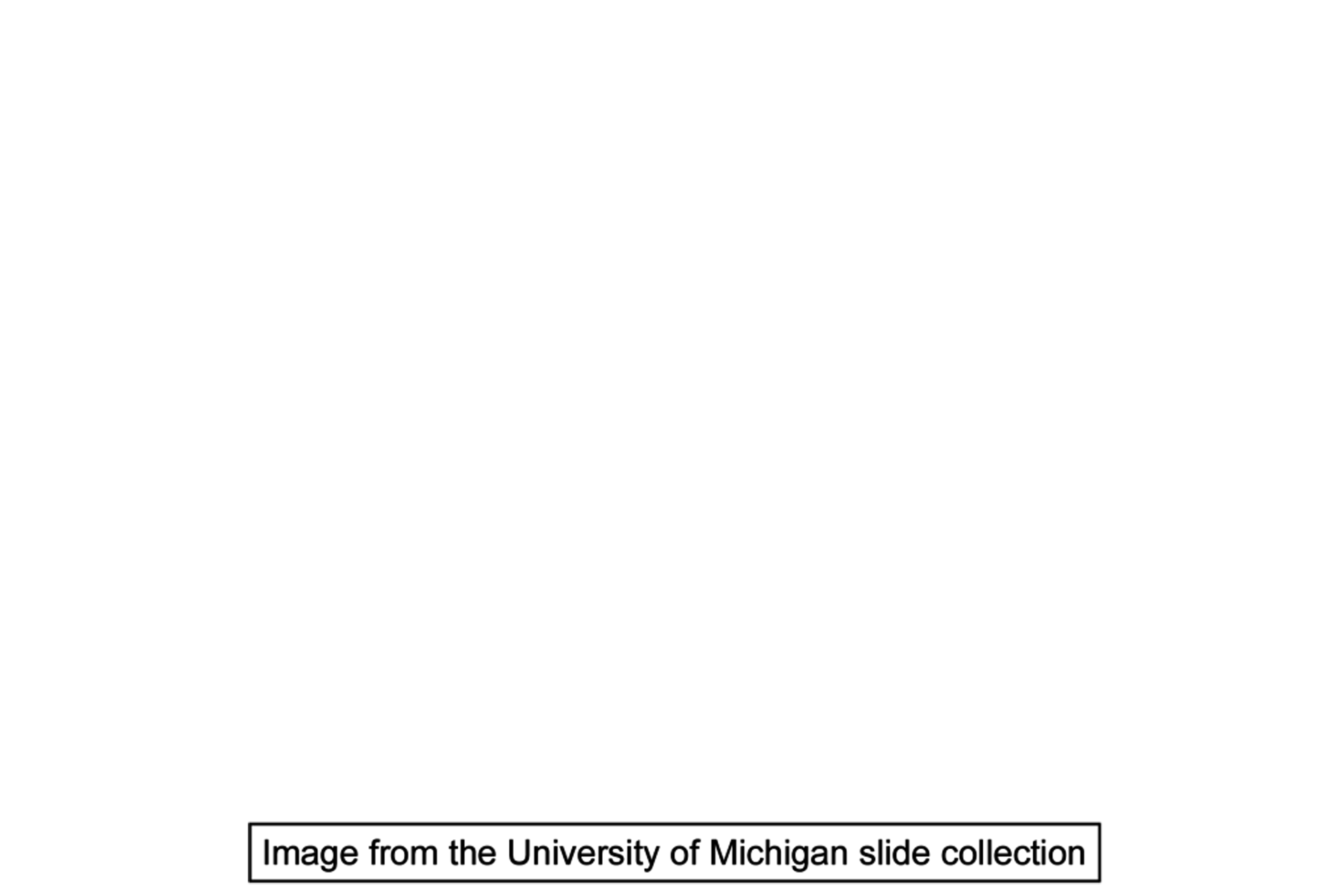
Thymus: aging
In relation to body weight, the thymus reaches its maximum development immediately after birth; however, it attains its largest size during adolescence. Thereafter, the thymus regresses (involutes), though it still continues to produce lymphocytes until old age. As seen here in an aged thymus, the normal organization of the lobules is lost, and an increase in adipose tissue occurs. 10x

Thymic tissue
In relation to body weight, the thymus reaches its maximum development immediately after birth; however, it attains its largest size during adolescence. Thereafter, the thymus regresses (involutes), though it still continues to produce lymphocytes until old age. As seen here in an aged thymus, the normal organization of the lobules is lost, and an increase in adipose tissue occurs. 10x

Adipose tissue
In relation to body weight, the thymus reaches its maximum development immediately after birth; however, it attains its largest size during adolescence. Thereafter, the thymus regresses (involutes), though it still continues to produce lymphocytes until old age. As seen here in an aged thymus, the normal organization of the lobules is lost, and an increase in adipose tissue occurs. 10x

Hassall’s corpuscles
In relation to body weight, the thymus reaches its maximum development immediately after birth; however, it attains its largest size during adolescence. Thereafter, the thymus regresses (involutes), though it still continues to produce lymphocytes until old age. As seen here in an aged thymus, the normal organization of the lobules is lost, and an increase in adipose tissue occurs. 10x

Image source >
Image taken of a slide from the University of Michigan collection.